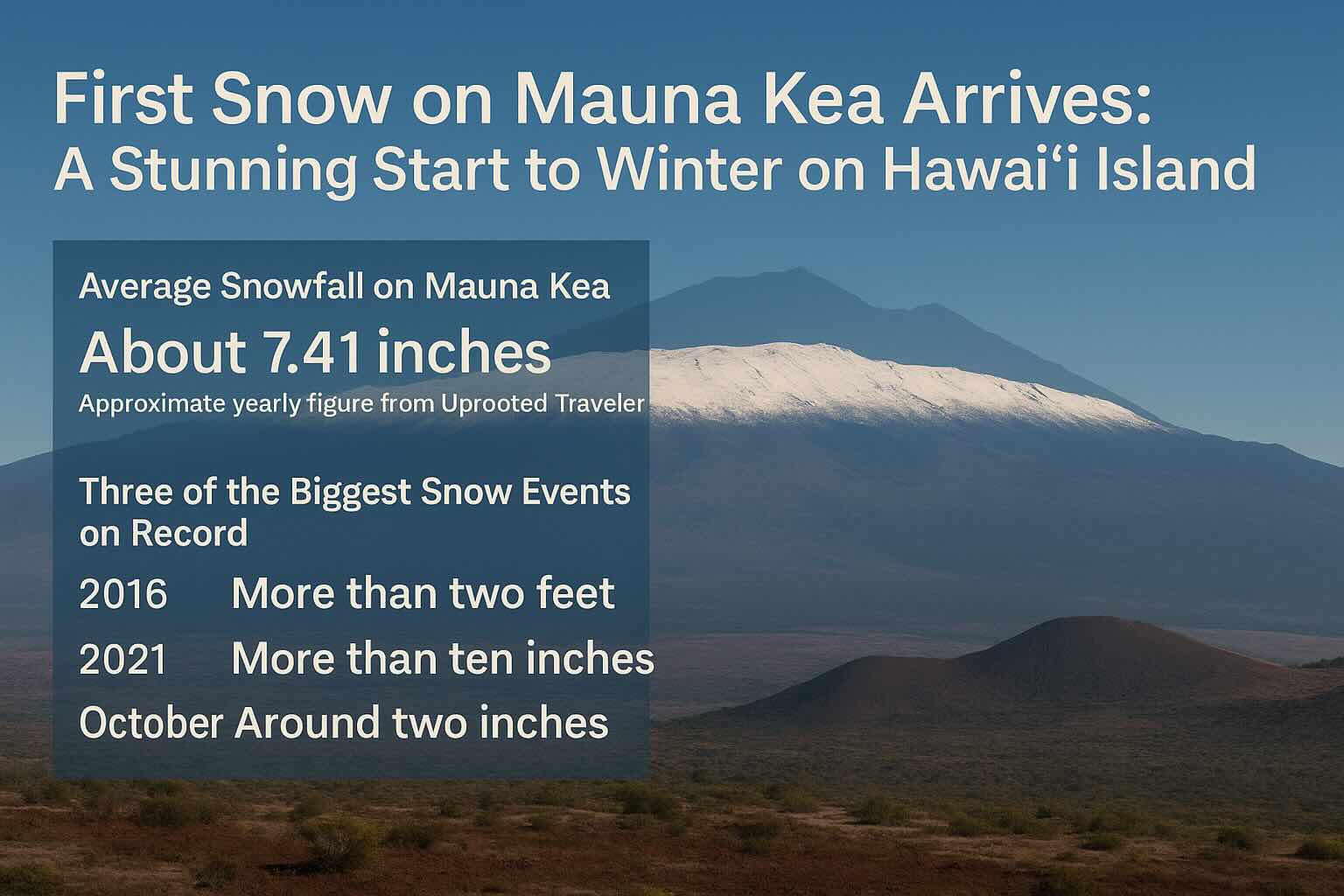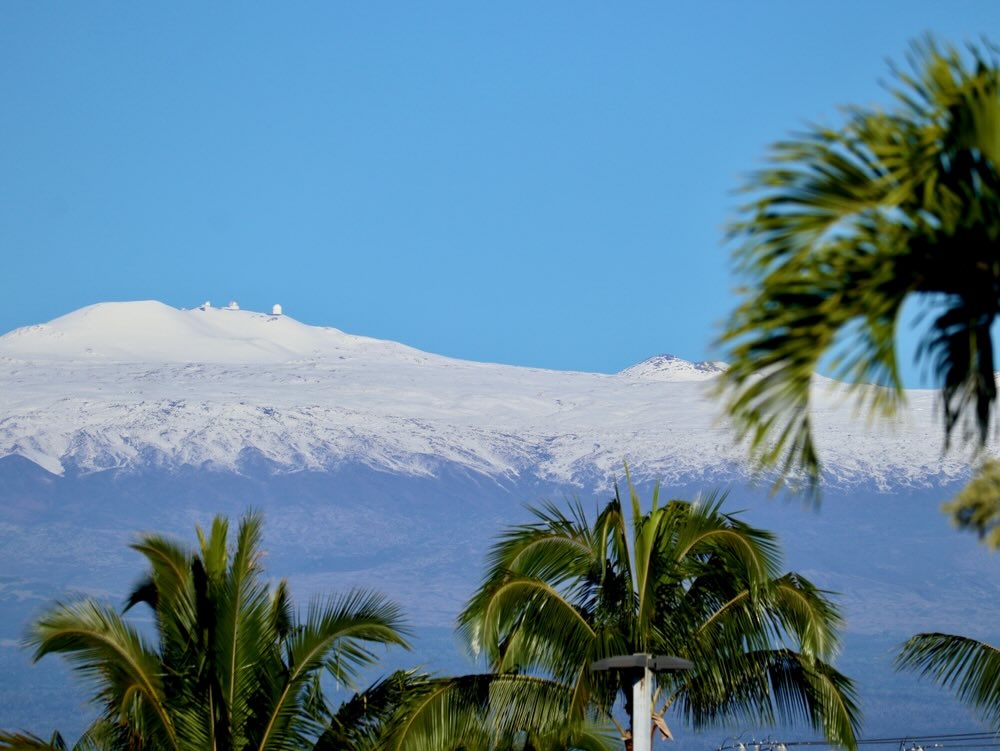A Stunning Start to Winter on Hawaiʻi Island
The first snow of the season has settled on Mauna Kea, and with it comes one of the most striking contrasts anywhere in the Pacific. While much of the world imagines Hawaiʻi as endless sunshine and warm ocean air, the summit of Mauna Kea regularly reminds us that the islands hold a far greater range of climates than many realize. Rising to nearly 14,000 feet, the mountain is high enough to receive measurable snowfall each winter, transforming the iconic volcanic peak into a momentary alpine scene.
Average Snowfall on Mauna Kea
Although snowfall is light compared to mainland mountain ranges, Mauna Kea does receive snow almost every year. One of the most widely referenced estimates puts the mountain’s annual snowfall at about 7.41 inches, based on climate data aggregated by independent researchers and summarized in travel and climate analyses we found. The summit’s official measurement stations are limited and conditions can be extreme, scientists note that this figure is an approximation rather than a precise long-term average. Still, it illustrates something surprising to many visitors: a tropical island can carry a winter dusting at its tallest point, creating a landscape that is completely unique to Hawaiʻi.
Three of the Biggest Snow Events on Record
While most winters bring only periodic dustings, Mauna Kea has seen several storms large enough to make national headlines. In 2016, a powerful winter system dropped more than two feet of snow across the summit region, covering both Mauna Kea and Mauna Loa in deep white powder. Another memorable storm in 2021 delivered more than ten inches in a single event, turning the observatory complex into a true winter scene. Most recently, in October 2024, an early-season storm brought around two inches of snow—light by comparison, but notable for its timing and the dramatic way it contrasted with the warm fall weather at sea level. Events like these demonstrate that while snowfall is a relatively small part of Hawaiʻi’s climate story, it can arrive with power and beauty when Pacific storms align.

Snow, Volcanoes, and Hawaiʻi’s Rare Natural Contrast
What makes snowfall on Mauna Kea so extraordinary isn’t just the snow itself, but the environment it settles on. Few places on Earth allow you to stand in warm ocean water in the morning and look up at a snow-covered volcanic summit. The contrast between white snow and the deep volcanic landscape creates a visual that visitors never forget. Across the neighbor islands, moments like this remind us how special Hawaiʻi is. If you are exploring a move to Hawaiʻi or searching for a home that captures the island lifestyle you’ve always imagined, our Trusted Island Professional Real Estate Experts are here to guide you from coastal retreats to upcountry escapes, we will help you find a property that feels like home in one of the most diverse and breathtaking places in the world.
Posted by Roger Pleski R(S) on


Leave A Comment